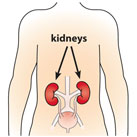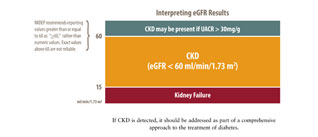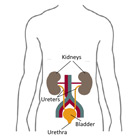
U.S. DEPARTMENT OF HEALTH AND HUMAN SERVICES
By the end of each session, participants will be able to:
What do you hope to get out of this session?
Have everyone stand up. State the following: Please sit down when you can say yes to any of these questions: Do you know someone who has diabetes? High blood pressure? CVD? Kidney disease? By the end, most everyone will be sitting. Use this as an opportunity to explain that they are not alone.
These images are available free of charge to download and include in your patient education materials.
 |
 |
 |
| An illustration of a child's body with arrows pointing to two kidneys located near the center of the back Download (.jpg/113 K) |
An illustration of the human body with arrows pointing to two kidneys located near the center of the back Download (.jpg/49 K) |
An illustration of an African-American human body with arrows pointing to two kidneys located near the center of the back Download (.jpg/57 K) |
 |
 |
|
| A graphic of a speedometer-like dial that depicts GFR results of 0 to 15 as kidney failure, 15 to 60 as kidney disease, and 60 to 120 as normal. Download (.jpg/105 K) |
A diagram illustrating a healthy kidney with albumin only found in blood, and a damaged kidney that has albumin in both blood and urine Download (.jpg/150 K) |
|
 |
 |
|
| A chart that lists diet tips to help slow down CKD Download (.jpg/72 K) |
Interpreting eGFR results chart Download (.jpg/58 K) |
|
 |
||
| The urinary system is made up of the kidneys and the urine collecting system. Each kidney is about the size of a fist and is located on either side of the spine. The urine flows through the ureters to the bladder where it's collected and eventually leaves the body through the urethra. Download (.jpg/47 K) |
||
PDF files require Adobe Acrobat
Page last updated: March 1, 2012